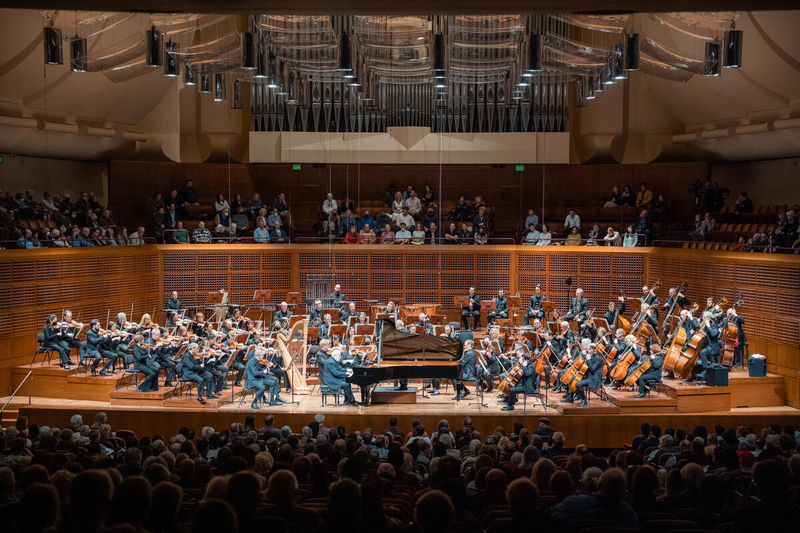
THE NEW CONCERTO: A MINI OR A MAXI?
The whirlwind known as the Swedish composer Anders Hillborg sprang his world-premiere “MAX” Concerto (No. 2, if you’re keeping count) on the world Oct. 12. It’s a curious piece, just 21 minutes long, in a single movement. By today’s standards, that might be identified as a mini-concerto for piano, offering subsections entitled Toy Piano, Soft Piano, Hard Piano, Ascending Piano, Mists and “Chorales and Echo Chamber,” with quasi-baroque segments. It’s like a salad containing delectable components from all over the kitchen.
In some ways, this suggests a throwback to the early days of concertos, given the brevity, the consonant writing, and the avoidance of virtuosity for the soloist. The notable exception was the enormous amount of music with the orchestra silent, putting the spotlight squarely on the soloist.
With the esteemed bearded veteran Emanuel Ax, 74, at the keyboard, looking like a double for Santa Claus, most of the solo writing was in congenial roulades (arpeggiated chords) running richly up and down the keyboard. And these ran almost nonstop throughout the work.
The accentuation was left to the orchestra, sometimes flamboyant in its tumult and rich brass outbreaks, then given to ear-tingling bells and other percussion effects, with occasional cadences. A couple of ethereal string segments were memorable, as was the sonic question mark ending the piece.
In the end the concise opus was an apt vehicle for the elder statesman of 88 keys named Ax, a formidable figure over a half century of concertizing, stemming (pre-immigration) from his birth in Ukraine.
With the ensuing standing ovation the beaming 69-year-old composer came on stage to hug both Ax (to whom this is dedicated) and Music Director Esa-Pekka Salonen, treated like longtime friends.
This work fell between two masterpieces, starting with Brahms’ familiar work that deserves to be retitled “Variations on a Theme NOT by Haydn,” as the foundation block known as the “St. Anton Chorale” has been shown to stem from much earlier sources. If there was little warmth in this interpretation, and the balances weren’t perfect, you had to admire the S.F. Symphony’s rich array of six stellar horns.
Usually, Beethoven’s Symphony No. 2 falls into the array of lyrical even-numbered symphonies contrasting with the dramatic odd-numbered ones in between. However Salonen’s intense and tightly wound, passionate interpretation suggested far more that the composer was presumably already anticipating his masterful “Eroica” (No. 3). (He had after all already chucked the traditional Minuet in favor of the far livelier Scherzo, setting the standard for the whole century to come.)
This emphatic, even stormy reading spotlighted the timpani and, in the finale, some of the finest playing I’ve heard from oboe principal Eugene Izotov.
MUSIC NOTES—Anticipating the Nov. 4 concert for the joyous Mexican Day of the Dead, the Davies hallways are already full of whimsical art work for the latter…At the other extreme, for those remembering Louise Davies and her family—donors of the hall 43 years ago—this summer her grandson Stockton Rush had perished as skipper of a submersible going to the deep-sea site of the Titanic wreck in the Atlantic.
SAN FRANCISCO SYMPHONY In Hillborg’s “MAX” Concerto world premiere, and Brahms, Beethoven, Oct. 12-14, Davies Symphony Hall, S.F. For info: (415) 864-6000, or go online www.sfsymphony.org.